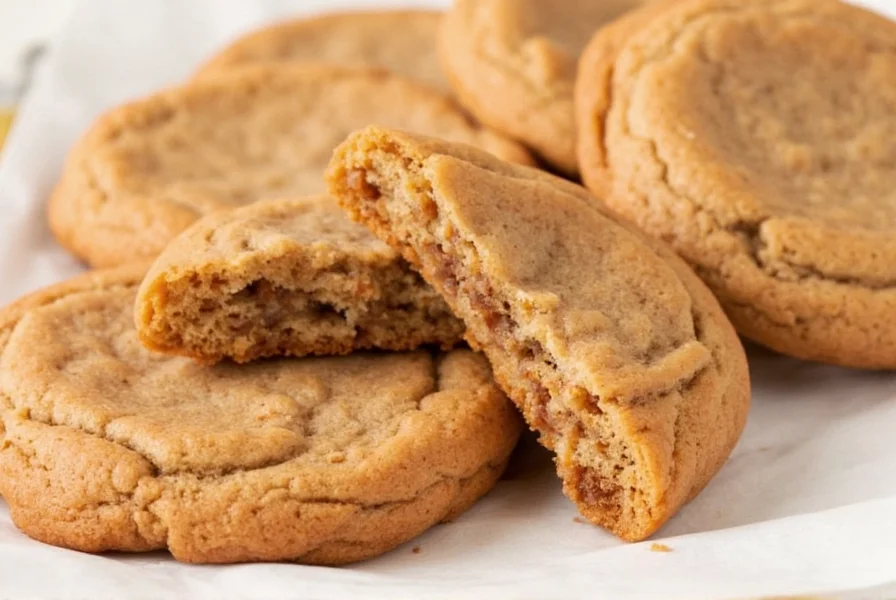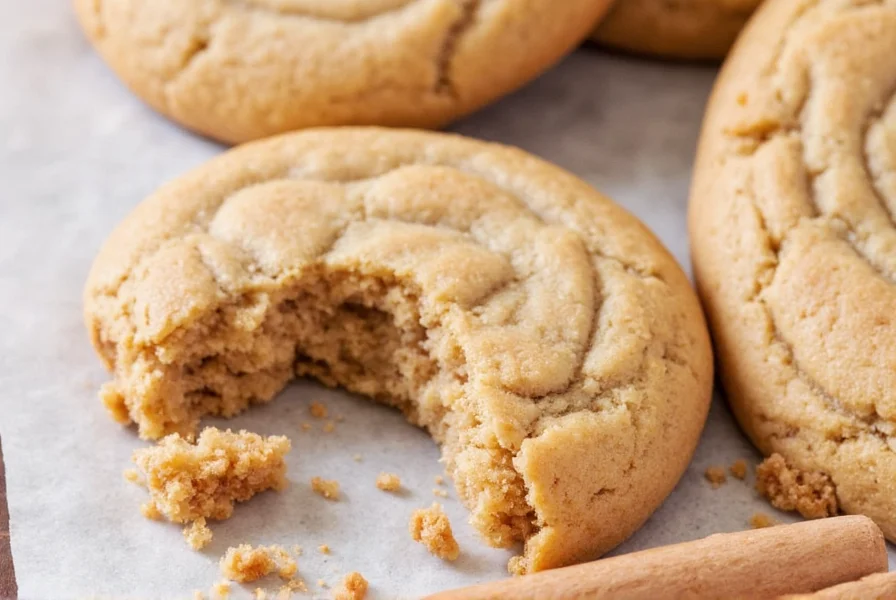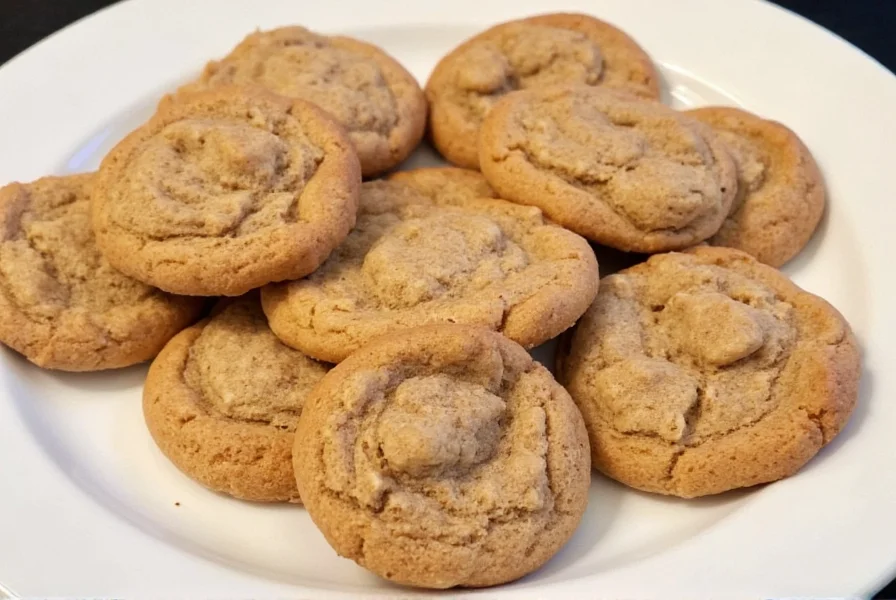Creating exceptional cinnamon cookies isn't just about following a recipe—it's understanding the science behind the ingredients and techniques that transform simple pantry staples into aromatic, perfectly textured treats. This guide delivers a meticulously tested cinnamon cookies recipe that consistently produces bakery-quality results in your home kitchen.
The Essential Cinnamon Cookie Formula
What separates good cinnamon cookies from extraordinary ones? The secret lies in precise ingredient ratios and proper technique. Cinnamon's potency varies by type and freshness, which is why this recipe specifies both measurement and visual cues to ensure perfect spice balance every time. Unlike many online recipes that use excessive cinnamon (resulting in bitter, overpowering cookies), our formula creates a warm, nuanced flavor that complements rather than dominates.
| Ingredient | Measurement | Professional Tip |
|---|---|---|
| All-purpose flour | 2 ½ cups (315g) | Spoon and level method prevents dense cookies |
| Ground cinnamon | 1 ½ teaspoons | Use Saigon cinnamon for intense flavor |
| Unsalted butter | ¾ cup (170g) | Must be properly softened (65°F) |
| Granulated sugar | 1 cup (200g) | Add 2 tbsp extra for crispier edges |
| Egg | 1 large | Room temperature for proper emulsification |
Step-by-Step Baking Process
Follow these professional techniques to achieve cookies with crisp edges and soft centers—the ideal cinnamon cookie texture profile:
- Cream butter and sugar for 3-4 minutes until light and fluffy (critical for proper aeration)
- Mix dry ingredients separately to ensure even cinnamon distribution
- Chill dough minimum 2 hours (prevents overspreading and enhances flavor development)
- Portion with cookie scoop for uniform size and even baking
- Bake at 350°F for 10-12 minutes until edges set but centers remain soft

Proven Baking Techniques
Professional bakers know that cookie success depends on factors beyond the recipe itself. For make cinnamon cookies success, pay attention to these often-overlooked details:
- Dough temperature matters: Remove chilled dough from refrigerator 15 minutes before baking for optimal spreading
- Oven calibration: Use an independent oven thermometer—most home ovens run 25°F hot
- Cooling technique: Transfer cookies to wire rack after 5 minutes on baking sheet to prevent overcooking
- Cinnamon freshness test: Rub a small amount between fingers—if aroma is weak, replace your spice
Troubleshooting Common Issues
Even experienced bakers encounter problems when trying to make cinnamon cookies. Here's how to fix the most frequent issues:
- Flat, greasy cookies: Butter was too warm or dough wasn't chilled sufficiently
- Dry, crumbly texture: Excess flour (always spoon flour into measuring cup)
- Bitter cinnamon flavor: Using old cinnamon or exceeding 1¾ tsp per batch
- Uneven baking: Rotate baking sheet halfway through cooking time
Variations for Different Preferences
Once you've mastered the basic recipe for how to make cinnamon cookies, experiment with these professional variations:
- Glazed version: Add 1¼ cups powdered sugar + 2 tbsp milk after cooling
- Chewy texture: Substitute 2 tbsp corn syrup for equal parts granulated sugar
- Gluten-free option: Use 1:1 gluten-free flour blend + ¼ tsp xanthan gum
- Spice enhancement: Add ¼ tsp each nutmeg and allspice for complex flavor

Storage and Freezing Instructions
Proper storage maintains freshness and texture. For best results when you make cinnamon cookies:
- Room temperature: Store in airtight container with parchment between layers for up to 5 days
- Freezing baked cookies: Layer in freezer container with wax paper for up to 3 months
- Freezing dough: Portion balls on tray, freeze solid, then transfer to freezer bag for 6 months
- Reviving stale cookies: Warm in 300°F oven for 3-5 minutes with damp paper towel
Frequently Asked Questions
Can I use cinnamon sticks instead of ground cinnamon?
No, cinnamon sticks won't provide the same flavor distribution. For make cinnamon cookies properly, you need ground cinnamon to ensure even spice distribution throughout the dough. If you only have sticks, grind them in a spice grinder until fine powder forms.
Why do my cinnamon cookies spread too much?
Excessive spreading typically occurs when butter is too warm or dough hasn't been chilled sufficiently. For perfect cinnamon cookies from scratch, ensure butter is softened but still cool to the touch (65°F), and always chill dough for at least 2 hours before baking.
How can I make my cinnamon cookies chewier?
For soft cinnamon cookies with chewy texture, increase brown sugar to 1¼ cups total (replacing some granulated sugar), reduce flour by 2 tbsp, and remove cookies from oven when centers still appear slightly underdone. They'll continue cooking on the baking sheet.
Can I double the cinnamon cookie recipe?
Yes, but don't simply double all ingredients. When making large batches of cinnamon cookies, increase cinnamon by only 1.8x (not 2x) to prevent overpowering spice flavor. Also, mix dough in two separate batches for proper ingredient incorporation.
What's the best way to measure flour for cinnamon cookies?
For accurate measurements when you make cinnamon cookies, use the spoon-and-level method: lightly spoon flour into measuring cup then level with straight edge. Never scoop directly from bag with measuring cup, as this compacts flour and adds 20-30% extra, leading to dry, crumbly cookies.











 浙公网安备
33010002000092号
浙公网安备
33010002000092号 浙B2-20120091-4
浙B2-20120091-4